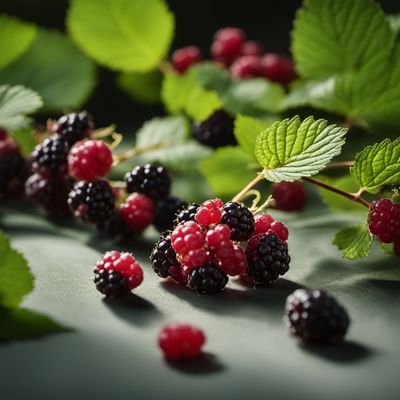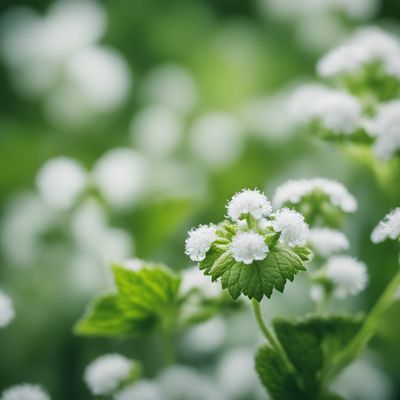
Ingredient
Hawthorn infusion leaves
"Nature's Heart Protector: Exploring the Benefits of Hawthorn Infusion Leaves"
Hawthorn infusion leaves, derived from the hawthorn tree, are small, dark green leaves with a distinct aroma. They have a slightly bitter taste and a delicate texture, making them ideal for infusions and herbal teas. These leaves are known for their vibrant green color and serrated edges, adding visual appeal to any dish or beverage.
Origins and history
Hawthorn infusion leaves have a rich history dating back centuries. Native to Europe, Asia, and North America, hawthorn trees have been revered for their medicinal properties in traditional Chinese, European, and Native American cultures. These leaves were traditionally used to support cardiovascular health and improve digestion.
Nutritional information
Hawthorn infusion leaves are a good source of antioxidants, vitamins C and B, and dietary fiber. They are low in calories and contain beneficial compounds that support heart health and digestion.
Allergens
There are no known allergens associated with hawthorn infusion leaves.
How to select
When selecting hawthorn infusion leaves, look for fresh, vibrant green leaves without any signs of wilting or discoloration. Choose leaves that are free from blemishes or insect damage. If purchasing dried leaves, ensure they are stored in airtight packaging to maintain freshness.
Storage recommendations
To preserve the freshness of hawthorn infusion leaves, store them in a cool, dry place in an airtight container. Dried leaves can be stored for up to a year, while fresh leaves should be used within a few days.
How to produce
Hawthorn trees can be grown from seeds or propagated through cuttings. They thrive in well-drained soil and prefer full sun or partial shade. Regular pruning helps maintain the tree's shape and encourages healthy leaf growth.
Preparation tips
To prepare a hawthorn infusion, steep a handful of leaves in hot water for 5-10 minutes. The resulting tea can be enjoyed on its own or sweetened with honey. Hawthorn infusion leaves can also be used as a flavorful addition to salads, soups, or stews.
Culinary uses
Hawthorn infusion leaves are commonly used to make herbal teas, infusions, and tinctures. They can also be added to baked goods, jams, and jellies for a unique flavor twist.
Availability
Hawthorn infusion leaves are commonly available in regions where hawthorn trees grow, such as Europe, Asia, and North America.
More ingredients from this category » Browse all

Golden root infusion leaves
Exploring the Golden Elixir: Unveiling the Power of Golden Root Infusion

Papaya infusion leaves
The Healing Power of Papaya Infusion Leaves

Tansy infusion leaves
The Herbal Elixir: Tansy Infusion Leaves

Hairy rupturewort infusion leaves
The Herbal Elixir: Unveiling the Magic of Hairy Rupturewort Infusion Leaves

Cowberry infusion leaves
The Nordic Elixir: Cowberry Infusion Leaves

Olive infusion leaves
The Essence of Olive Infusion Leaves

Goldenrod infusion leaves
Goldenrod Elixir: Unlocking the Healing Power of Nature

Sweet blackberry infusion leaves
The Berry's Aromatic Brew

Herb bennet infusion leaves
The Herbal Elixir: Unveiling the Power of Herb Bennet

Chiretta infusion leaves
The Bitter Elixir: Unveiling the Power of Chiretta Infusion Leaves

White deadnettle infusion leaves
The Soothing Elixir: White Deadnettle Infusion Leaves

Ground ivy infusion leaves
"Nature's Herbal Elixir: Unveiling the Wonders of Ground Ivy Infusion Leaves"